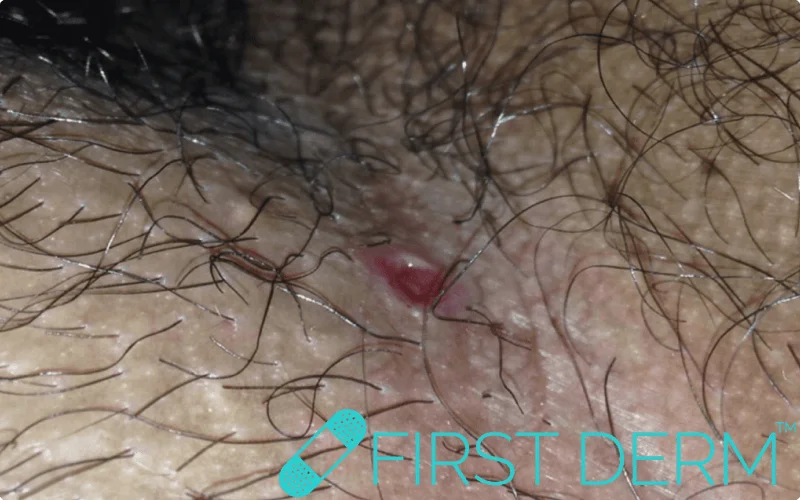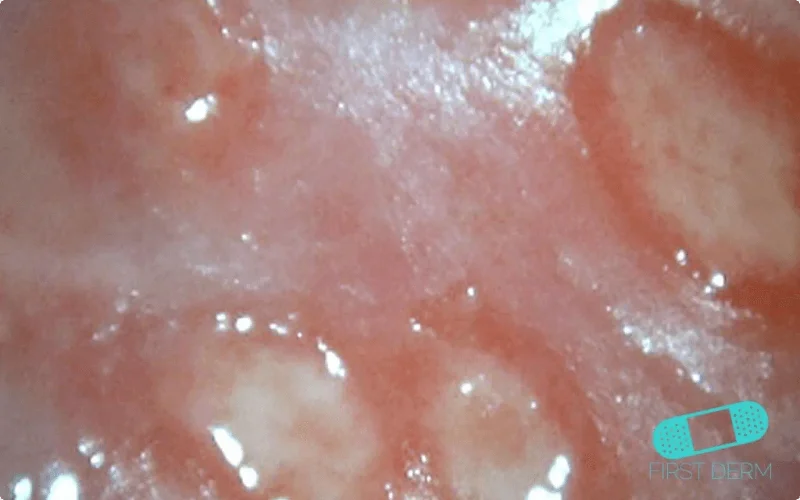The role of STDs in increasing your risk of getting HIV

Sexually transmitted diseases and HIV: An overview
Sexually transmitted diseases (STDs) are infections that spread through sexual contact, including vaginal, anal, and oral sex. They can be caused by bacteria, viruses, and parasites, and can affect anyone who is sexually active. Some common STDs include chlamydia, gonorrhea, syphilis, genital herpes, human papillomavirus (HPV), and human immunodeficiency virus (HIV).
HIV, or human immunodeficiency virus, is a virus that attacks the immune system and can lead to acquired immunodeficiency syndrome (AIDS). It is primarily spread through unprotected sex with an infected person, sharing needles or other injection equipment with an infected person, or from mother to child during pregnancy, childbirth, or breastfeeding.
STDs and HIV are serious public health concerns that can have long-term health consequences if left untreated. They can also be associated with social stigma and discrimination, particularly for individuals from marginalized communities.
According to the World Health Organization (WHO), an estimated 1 million sexually transmitted infections (STIs) are acquired every day worldwide1. In 2021, there were approximately 38.4 million people living with HIV globally2. While both STDs and HIV are prevalent, they can often be prevented through education, practicing safe sex, and regular testing and treatment.
By reading this article you will be able to understand the link between STDs and HIV, the role of STDs in increasing the risk of getting HIV, and preventive measures to be taken to prevent STDs and HIV.
Sexually transmitted diseases can increase the risk of HIV infection. Therefore measures should be taken to prevent them. Accurate diagnosis and treatment of STDs and HIV infection can lead to the betterment of the diseases. Online dermatology also can be used as a convenient way for diagnosis and treatment of skin conditions due to STDs.
How STDs can increase the risk of getting HIV?
Show Images

A syphilitic chancre on the groin of a patient. This ulcer can increase the risk of HIV transmission by providing an easy entry point for the virus. Syphilis is a sexually transmitted infection caused by the bacterium Treponema pallidum.

Genital sores are ulcers that can appear on or around the genitals and anus. They can be caused by various factors, such as infections, allergies, or skin conditions, and may cause pain, itching, burning, bleeding, or discharge. Common causes include sexually transmitted infections like herpes, syphilis, chancroid, molluscum contagiosum, and genital warts. It can increase the risk of transmitting or acquiring sexually transmitted infections.
STDs can increase the risk of getting HIV in several ways
- STDs can cause sores, cuts, or lesions on the genital area, which can provide an entry point for the HIV virus to enter the body during sexual contact. These sores can also increase the risk of HIV transmission if an HIV-positive person has sexual contact with an uninfected partner.
- STDs can cause inflammation in the genital area, which can increase the concentration of immune cells in the genital tissues. HIV infects these immune cells, so the presence of more immune cells in the genital tissues increases the likelihood of HIV transmission or acquisition.
- Some STDs can increase the viral load (the amount of HIV in the blood and genital secretions) of an HIV-positive person. This means that an HIV-positive person with an STD may have a higher concentration of HIV in their genital secretions, making it more likely that they will transmit HIV to their sexual partners.
Finally, STDs can increase the risk of HIV transmission from mother to child during pregnancy, childbirth, or breastfeeding. HIV-positive mothers who also have an STD have a higher risk of transmitting HIV to their infants. It is important to note that HIV-positive individuals who are on antiretroviral therapy (ART) and have an undetectable viral load have a greatly reduced risk of transmitting HIV to their sexual partners, even if they have an STD. However, it is still important to prevent and treat STDs to reduce the risk of HIV transmission and maintain overall sexual health.
Different study designs were used to examine the relationship between STDs and HIV acquisition. Acutely HIV-infected patients, newly diagnosed chronically infected patients, and HIV-negative patients were used for the study. The results have shown that among the HIV-infected patients, 36 cases (10.3%) were identified as acute. They have found that a consistently higher number of patients have had an STD within 12 months. They have also found a higher number of acute HIV infections among patients with concurrent rectal gonorrhea or syphilis when compared with those HIV-uninfected patients 3.
STDs that are more likely to increase the risk of HIV infection
Some STDs are more closely linked to HIV than others, based on several factors, including their symptoms, prevalence, and effects on the body.
Symptoms
STDs that cause sores or ulcers in the genital area, such as syphilis and herpes, increase the risk of HIV transmission or acquisition because they provide a direct entry point for the virus. In contrast, STDs like chlamydia and gonorrhea often do not cause noticeable symptoms, which can make them more difficult to detect and treat. As a result, individuals with undiagnosed or untreated chlamydia or gonorrhea may unknowingly have an increased risk of HIV transmission or acquisition.
Prevalence
STDs that are more common in certain populations or regions can increase the risk of HIV transmission or acquisition in those areas. For example, in sub-Saharan Africa, where HIV is highly prevalent, genital ulcer diseases like syphilis and herpes are also common. This makes the population more susceptible to both STDs and HIV.
Effects
Some STDs can cause inflammation in the genital area, which can increase the concentration of immune cells in the genital tissues. This can increase the likelihood of HIV transmission or acquisition. Additionally, some STDs, like hepatitis B and C, can cause liver damage, which can weaken the immune system and make it more susceptible to HIV.
The following are some examples of STDs that are more likely to increase the risk of HIV infection.
Syphilis
Syphilis is a bacterial infection that can cause sores, rashes, and fever. If left untreated, it can cause serious health problems, including damage to the brain, nerves, and organs. Syphilis can increase the risk of HIV transmission by causing genital sores or ulcers, which provide an entry point for the HIV virus to enter the body.
Gonorrhea
Gonorrhea is a bacterial infection that can cause painful urination, discharge from the penis or vagina, and fever. If left untreated, it can cause serious health problems, including pelvic inflammatory disease (PID) and infertility. Gonorrhea can increase the risk of HIV transmission by causing inflammation in the genital area, which increases the concentration of immune cells in the genital tissues.
Herpes
Herpes is a viral infection that can cause painful blisters or sores on the genitals or mouth. Herpes can increase the risk of HIV transmission by causing genital sores or ulcers, which provide an entry point for the HIV virus to enter the body.
Chlamydia
Chlamydia is a bacterial infection that can cause discharge from the penis or vagina, painful urination, and fever. If left untreated, it can cause serious health problems, including PID and infertility. Chlamydia can increase the risk of HIV transmission by causing inflammation in the genital area, which increases the concentration of immune cells in the genital tissues.
Studies of adults living with HIV/AIDS from developed and developing countries reported STD rates for 46 different samples. The overall mean point-prevalence for confirmed STD was 16.3%, and the median 12.4% STD prevalence in people living with HIV/AIDS. The most common STDs studied were Syphilis with median 9.5% prevalence, Gonorrhea 9.5%, Chlamydia 5%, and Trichomoniasis 18.8% prevalence. STD prevalence was greatest at the time of HIV diagnosis, reflecting the role of STI in HIV transmission 4.
How to prevent STDs and HIV?
How to reduce the risk of spreading STDs and HIV?
Reducing the risk of getting or spreading STDs and HIV involves several key strategies. They are,
- Choosing less risky sexual behaviors: Abstinence is the only way to completely eliminate the risk of getting or spreading STDs and HIV. However, for individuals who choose to be sexually active, reducing the number of sexual partners, avoiding sexual contact with people who have symptoms of an STD, and avoiding sharing needles or other injection equipment can reduce the risk of infection.
- Using condoms correctly and consistently: Condoms are highly effective in reducing the risk of STDs and HIV when used correctly and consistently during sexual activity. It is important to use a new condom for each act of sexual activity and to use a water-based lubricant to prevent condom breakage.
- Getting tested regularly: Regular testing for STDs and HIV is important for individuals who are sexually active. Testing can detect infections early, allowing for prompt treatment and reducing the risk of transmission to others. Testing can also help to reduce stigma and promote overall sexual health.
- Seeking treatment if needed: If an individual tests positive for an STD or HIV, it is important to seek prompt treatment from a healthcare provider. Treatment can help to manage symptoms, prevent complications, and reduce the risk of transmission to others.
In addition to these strategies, it is important to communicate openly and honestly with sexual partners about STDs and HIV. Discussing sexual history, getting tested together, and using condoms can help to reduce the risk of infection and promote overall sexual health.
Importance of early diagnosis and treatment of STDs and HIV
Early diagnosis and treatment of both STDs and HIV are crucial for several reasons.
- Avoiding complications: If left untreated, STDs can cause serious health problems, including infertility, pelvic inflammatory disease, and certain types of cancer. HIV can also lead to serious complications, including AIDS, which can be life-threatening. Early diagnosis and treatment can help to prevent or manage these complications, improving overall health outcomes.
- Reducing transmission: STDs and HIV can be easily transmitted to sexual partners and others through unprotected sexual contact, sharing needles or other injection equipment, or from an infected mother to her child during pregnancy, childbirth, or breastfeeding. Early diagnosis and treatment can reduce the amount of virus or bacteria present in the body, reducing the risk of transmission to others.
- Promoting overall sexual health: Regular testing and early diagnosis of STDs and HIV can help to promote overall sexual health by detecting and addressing infections early. This can help to reduce stigma and encourage open communication about sexual health, ultimately promoting a healthier and more informed approach to sexual activity.
It is important to note that some STDs, such as chlamydia and gonorrhea, may not have noticeable symptoms, making regular testing even more important. Many healthcare providers offer confidential testing for STDs and HIV, and treatment options are available for those who test positive. By prioritizing early diagnosis and treatment of STDs and HIV, individuals can help to prevent complications, reduce transmission, and promote overall sexual health.
Testing and treatment of STDs and HIV
Testing and treatment of STDs and HIV are essential for preventing the spread of these infections and promoting overall sexual health.
Testing for STDs and HIV:
- Regular testing is recommended for those who are sexually active or engage in high-risk behaviors. This can include a combination of laboratory tests (such as blood tests or swabs of the genital area) and clinical exams.
- Some STDs, such as chlamydia and gonorrhea, may not have noticeable symptoms, so testing is important even if you feel fine.
- Testing for HIV typically involves a blood test or oral fluid test, which can detect the presence of HIV antibodies or viral RNA.
What are HIV testing services?
HIV testing services include the full range of services that should be provided together with HIV testing: counseling (pre-test information and post-test counseling); linkage to appropriate HIV prevention, treatment and care services, and other clinical and support services; and coordination with laboratory services to support quality assurance and the delivery of correct results.
WHO has been producing regular evidence-based recommendations since HIV testing services were first developed in 1985. In 2015, WHO published the first consolidated guidelines on HIV testing services followed by a supplement focusing on HIV self-testing and partner services. In 2019, WHO updated the consolidated HIV testing services guidelines 5.
Treatment for STDs and HIV
- Treatment options vary depending on the specific infection and may include antibiotics, antiviral medications, or other medications to manage symptoms or complications.
- Treatment is most effective when started early, so it’s important to seek medical care as soon as possible if you suspect you may have an STD or HIV.
- Treatment can also reduce the risk of transmission to sexual partners and others.
Therapeutic interventions for the treatment of HIV infection include,
- Targeting provirus
- Targeting immune system
- Cell and gene therapy 6
Summary
Sexually transmitted diseases are spread through sexual contact. They are caused by bacteria, viruses, and parasites and affect people who are sexually active. STDs along with HIV infection can have long term health consequences. STDs can increase the risk of getting HIV by sores, inflammation, increase in viral load, and transmission from mother to child during pregnancy. Some STDs are more closely linked to others based on their symptoms, prevalence, and effect on the body. Some STDs that are more likely to increase the risk of HIV infection are syphilis, gonorrhea, herpes, and chlamydia.
Risk of spreading STDs and HIV can be reduced by choosing less risky sexual behaviors, using condoms correctly, getting tested regularly, and seeking treatment if needed. Early diagnosis and treatment of STDs and HIV are important to avoid complications, reduce transmission, and to promote overall sexual health. Regular testing is recommended for people who are sexually active. Treatment options may vary depending on specific infection. Treatment will be effective when started early. Online dermatologists can provide confidential, convenient, and affordable consultation and diagnosis.
Open communication with the sexual partner, discussing sexual history, getting early tests and treatments, and practicing safe sex using condoms can prevent the spreading of STDs and increase the risk of HIV infection; and can provide better sexual health.
References
- World Health Organization, Sexually transmitted infections (STIs), https://www.who.int/news-room/fact-sheets/detail/sexually-transmitted-infections-(stis)
- World Health Organization, HIV, https://www.who.int/data/gho/data/themes/hiv-aids
- Nicola M Zetola 1, Kyle T Bernstein, Ernest Wong, Brian Louie, Jeffrey D Klausner, Exploring the relationship between sexually transmitted diseases and HIV acquisition by using different study designs, https://pubmed.ncbi.nlm.nih.gov/19367993/
- Seth C Kalichman, Jennifer Pellowski, Christina Turner, Prevalence of sexually transmitted co-infections in people living with HIV/AIDS: systematic review with implications for using HIV treatments for prevention, https://sti.bmj.com/content/87/3/183
- World Health Organization, HIV testing services, https://www.who.int/teams/global-hiv-hepatitis-and-stis-programmes/hiv/testing-diagnostics/hiv-testing-services
- Steven G. Deeks, Nancie Archin, Paula Cannon, Simon Collins, Brad Jones, Marine A. W. P. de Jong, Olivier Lambotte, Rosanne Lamplough, Thumbi Ndung’u, Jeremy Sugarman, Caroline T. Tiemessen, Linos Vandekerckhove, Sharon R. Lewin & The International AIDS Society (IAS) Global Scientific Strategy working group, Research priorities for an HIV cure: International AIDS Society Global Scientific Strategy 2021, https://www.nature.com/articles/s41591-021-01590-5
Ask a Dermatologist
Anonymous, fast and secure!

The Specialist doctor from the University Hospital in Gothenburg, alumnus UC Berkeley. My doctoral dissertation is about Digital Health and I have published 5 scientific articles in teledermatology and artificial intelligence and others.

